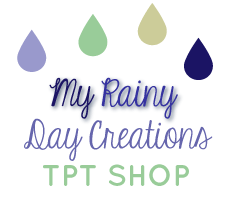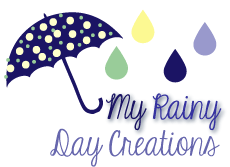Do you have a student (or students) that just can't seem to remember anything you taught in class? I have had them. It is mystifying. One day he can do a skill perfectly, and the next day he looks at your like a deer in the headlights.
Well, after reading David Sousa's How the Brain Learns I can say that I am amazed that any of my students remembered anything I taught! I don't say this because I was a bad teacher, but because I didn't utilize brain science to structure my class to help their brains soak up information. I did some things right, but a lot was wrong.
Here is what I would do differently today. Hopefully you get a few ideas to help your students remember all that good stuff you are teaching.
1. In deciding what information to keep and what information to toss, your brain asks two questions. First, "Does it make sense?" It is hard to remember something that doesn't make sense. The second (and more important) question is "Does it matter to me?" You can actually remember something that doesn't make any sense to you if you think it is important to remember. This means that the first step in creating any lesson is to figure out why it is important for the kids to know the information you are teaching. Remember, it needs to be important to the kids. So, the high stakes test at the end of the year isn't going to be a compelling reason for the kiddos.
This is much harder than you would think! It brought to mind multiplying fractions. Why do we need to learn this? I use a lot of math in my every day life, but I have yet found a situation that required multiplying a fraction. So, I did what I always do when I have a question. I Googled it. Turns out engineers, doctors, nurses, and statisticians (just to name a few) all multiply fractions as part of their jobs. So, if a kid is thinking about one of these career paths, it should have a lot of meaning for them. It would be great to talk to someone with one of these jobs to find out how and when they need to multiply fractions.
Whatever you are teaching, remember that how meaningful the kids find it will determine if they remember it. So, if it is worth teaching, it is worth taking the time to find meaning.
Don't forget to ask kids why they think the information they are about to learn is meaningful to them. They might have ideas you never considered.
2. We all have a self-concept. It is how we see our own place in the world. We all see ourselves as good at math, a bad student, a class clown, etc... The way we see ourselves heavily impacts our willingness to engage with a new challenge. If we think we will succeed, we will try. If we don't think we will succeed, we will not try. In fact, we will block out all new information because we don't want to engage and then fail.
This means that it is very important to make kids feel like they will be successful if they engage in your lesson. The best way to do that is to give them lots of opportunities to be successful, so they begin building a new self-concept of themselves.
How do we get kids to try who have a low self-concept? It takes time, patience, and lots of planning. For these particular students (and maybe everyone), I would design a lesson in small chunks. The most simple information/assignment would come first. The student would have success before moving on to the next small chunk. By the end of the lesson, all students would have mastered the same material, but the low self-concept kids would have been able to do so in a much safer baby-stepping way. Trust me, I realize that this would be complicated in a classroom. I am already thinking of ways to create these scaffolds for you.
3. Speaking of baby-stepping. It is important to remember that kids can only hold 3-5 items in their working memories at one time. So, a lesson with more than 3-5 pieces of information is just setting kids up for failure. Also, they can only concentrate on new information for about 10 minutes before needing a break. This isn't to say that you should only work for ten minutes, but create some kind of break in the lesson around 10 minutes to give the kids a chance to refresh before jumping back to work.
4. As we covered in step one, motivation is the most important predictor of student success (or any success). The kids have to want to learn what you are teaching, or do what you are asking them to do. So, how do we get kids to want to learn something they think they don't want to learn? Explaining why the topic is meaningful is a start. You also need to give them work that they will enjoy. Kids love to create something new. Posters, dioramas, games, skits... You get the picture. Worksheets are probably the most boring thing, but even those can be made into some kind of game. I am working on ideas for that too!
5. Once you have gotten the kids engaged with the lesson, you want to make sure that they remember all of this great learning. Turns out that humans forget 70-90% of what they have learned within 24 hours. Yikes! To help your students store the important stuff, you will have to use the concept of closure. You will want to give them some time to synthesize what they have just been learning. You will need to give them direction to help them know what it is important. For example, "What are two ways you can show 7 x 6 = 42 using models?" The kids will go through the process of putting the multiplication fact into models in their heads. Then, ask for people to share what they did. Knowing that they will have to share their ideas, the kids will be more likely to actually do the work in their own heads first. Closure can happen anytime, but the most helpful time is at the end of a lesson.
6. Since we forget so much within 24 hours, it is important to wait at least 24 hours to test if new information has been stored in long term memory. We can't remember anything that hasn't made its way to long term memory. Don't tell kids that a quiz will be coming up. If they know it is coming, they will study right before the quiz. You will be seeing their working memory instead of the long term memory.
In order to keep self-concept high, make sure kids know that the quiz is just to see what needs to be retaught because it wasn't stored. Use the results to guide your future teaching.
I know that was a lot of information, but I hope that you came away with something that you can take into your own classroom. If you did, please share it in a comment. I would love to hear about it!
If you are interested in learning more about how the brain works, you will want to read David Sousa's book. You can get it at Amazon. The link below is an affiliate link. Buying through the link helps support my blog!
Saturday, September 10, 2016
How We Can Help Students Store New Learning
Labels:
best practices,
brain,
David Sousa,
How the Brain Learns,
learning,
teaching
Subscribe to:
Post Comments (Atom)








No comments:
Post a Comment